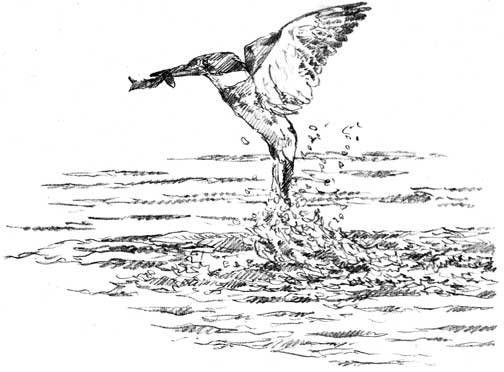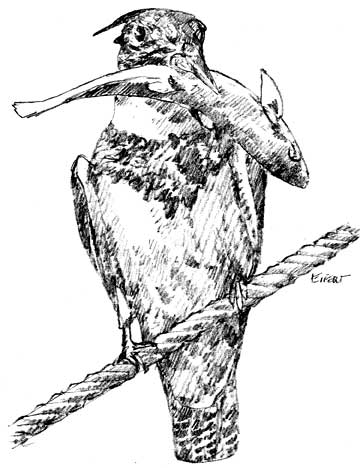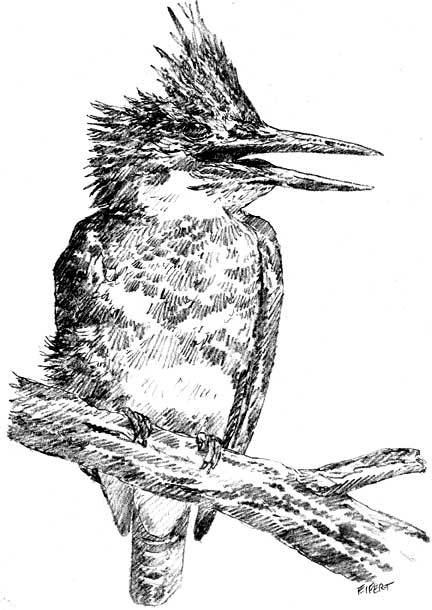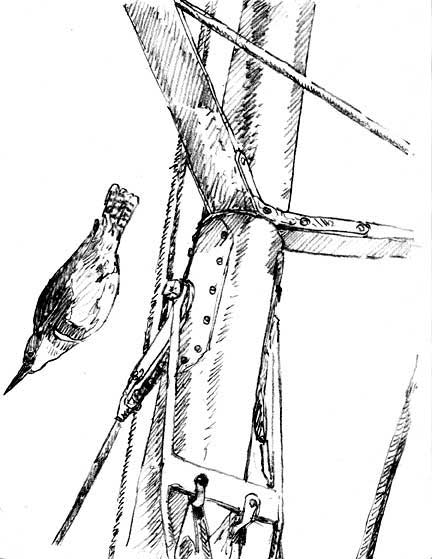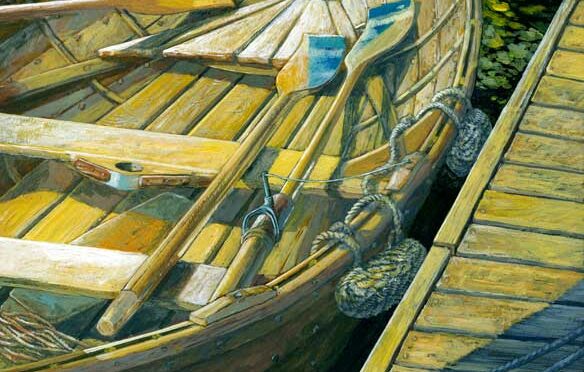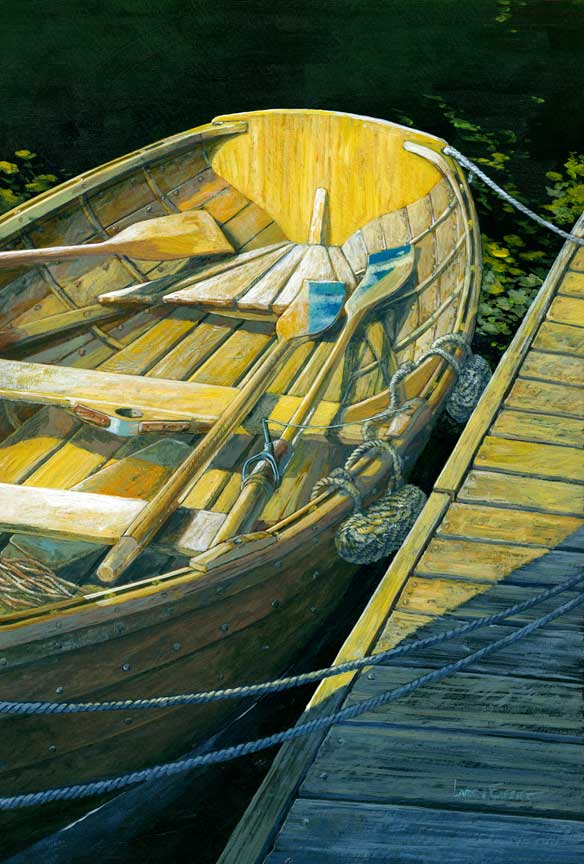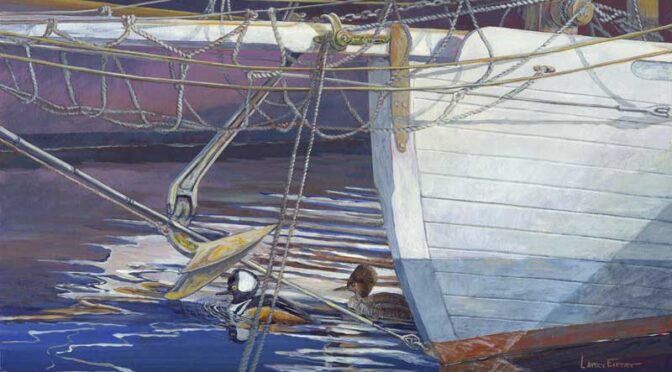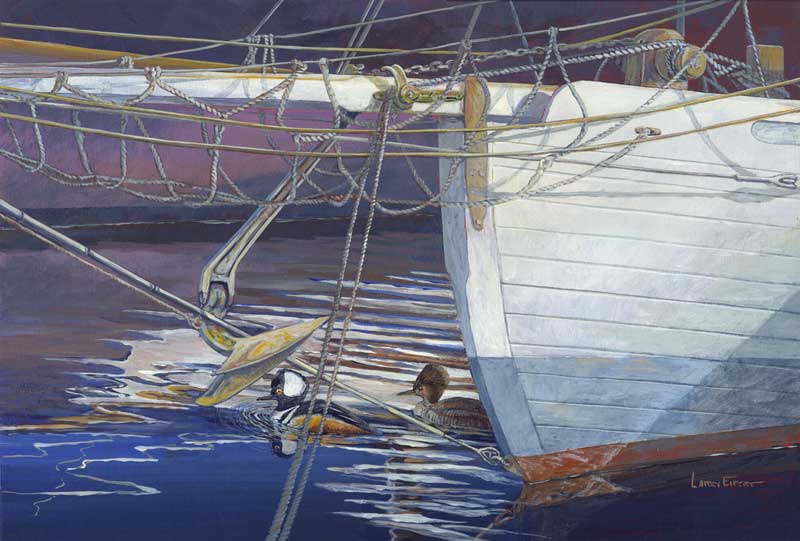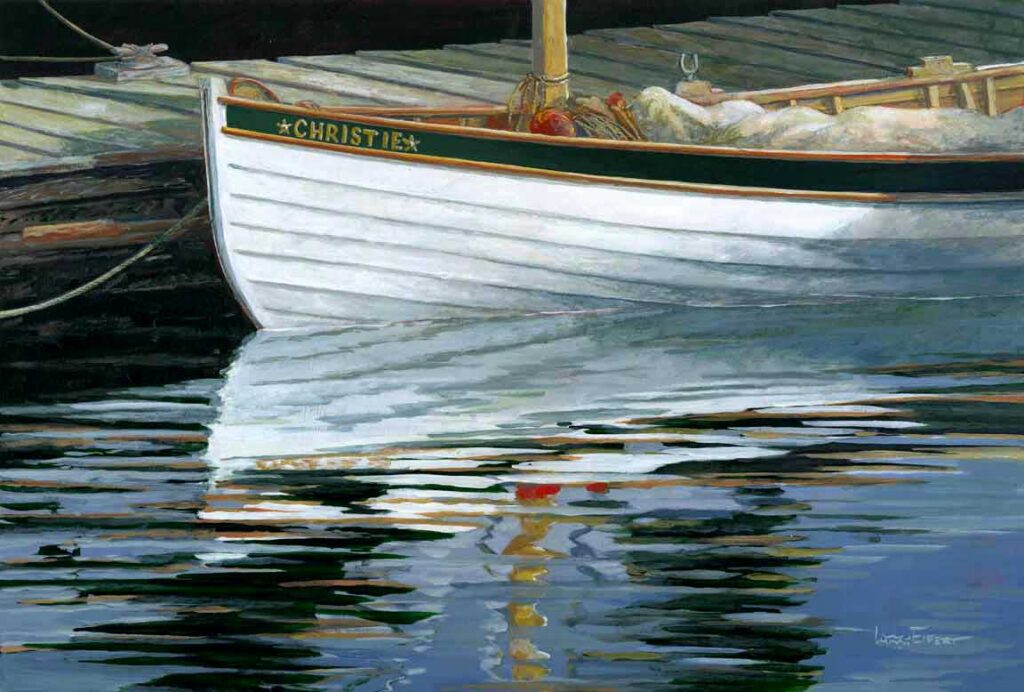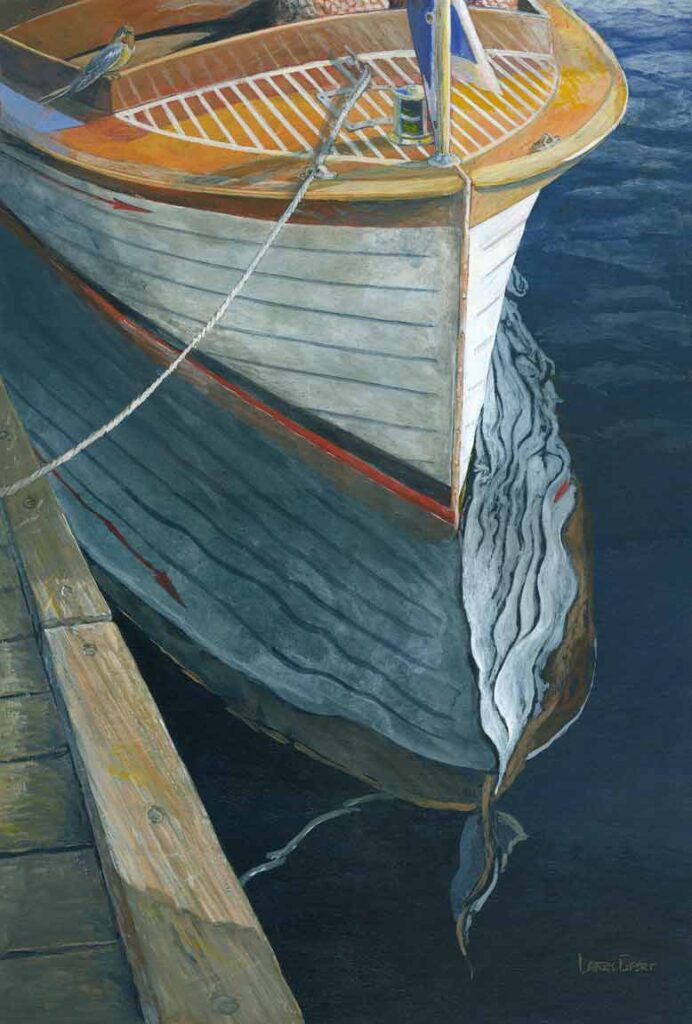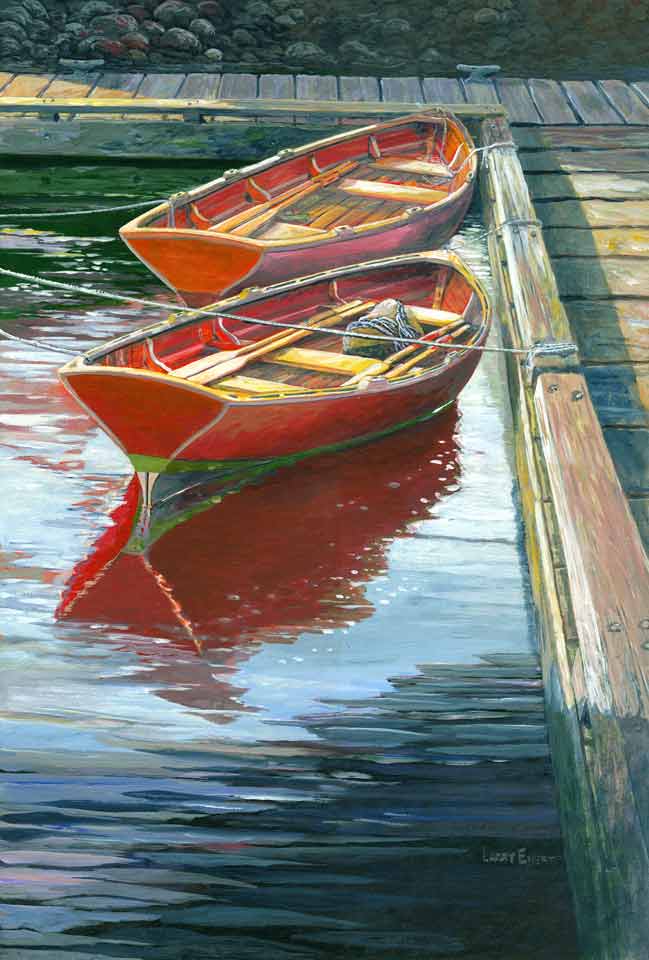Rumpy in the glory years when these two artists owned her.
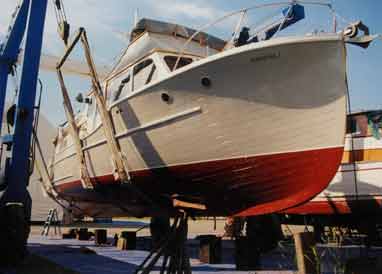
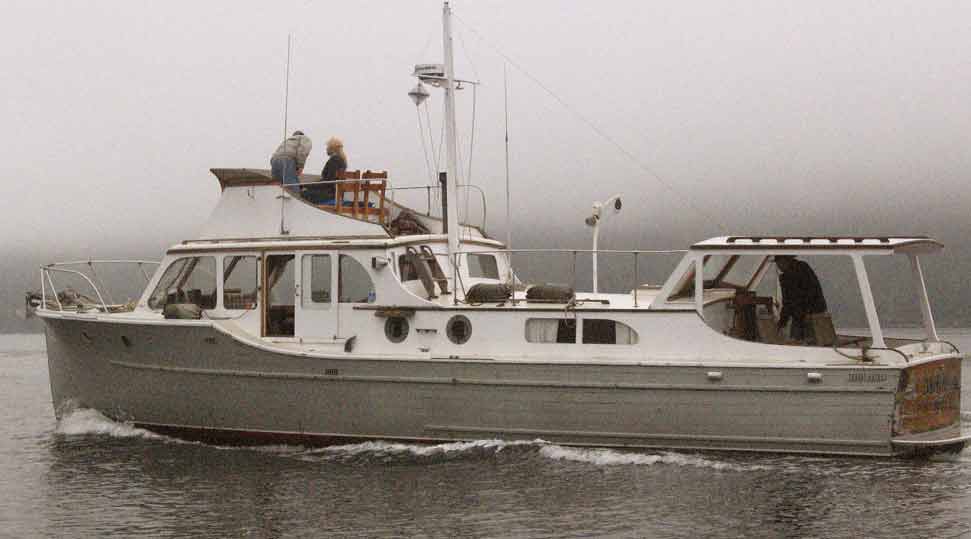
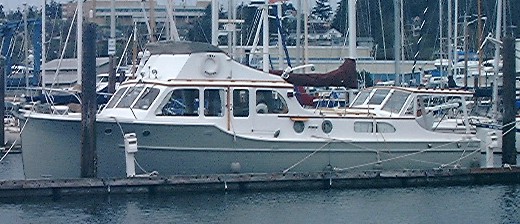
Art comes in all shapes and sizes, and over the years I’ve been involved in the making of a whole bunch of it. This week, I got to save a piece of art both Nancy and I once joyfully owned – so we’re passing the story along to all of you.
On Halloween of 1994, Nanc and I bought this boat, an iconic 1941 45-foot wooden tri-cabin power boat in Seattle and brought it over to the Olympic Peninsula. At 76,000lbs, it was a handfull! We wanted to get into Port Townsend, but the marina was full so we settled for a more remote yet very scenic small bay and community of Port Ludlow. Many of you remember those years when a marina slip number as our mailing address. As the years went by, we rebuilt and restored Rumpuckorori (or Rumpy as we called her) to a very beautiful craft – really, a functional piece of art. For us, it was home. We weathered storms at the dock when we thought the marina was going to break up, we cruised up the Inside Passage into British Columbia, and even lived in the boatyard when bottom work needed to be done. In effect, we created a liveable piece of wooden art!
When we bought the “Lodge” in Port Townsend in 2000, we couldn’t also own this huge boat, so we sold her to a retired guy who promised to keep her going. Well, we’re sorry to say he didn’t! After a few years of simply hiring out all the work, he gave up and the boat hasn’t moved in years. Paint began to peel, rot came a’creeping, fresh water got in the bilge and all manner of bad things began to happen. Old wooden boats need paint and varnish or they die pretty quickly. Friends told us to not go and look, but we did anyway and occasional visits left us shaking our heads in sorrow. I predicted that if nothing was done, Rumpy would die by 2010 or so.
Then, two months ago I received a call from the owner pleading for help. A month ago I met two very nice Canadians with some energy and skills looking for just this kind of boat. Last Sunday morning in fog and drizzle, I helped move Rumpy to dry storage in Port Townsend to begin reconstruction – and a new life.
I think there’s a longer story here. By doing this I feel like we helped continue all the energy and money, frustrations and good times of a great many people, from the past builders and former owners, to countless shipwrights that have ever worked on her during her 68 years – to us! It’s a connection I’m not willing to just let slide out of my life for good, and in a few years, I’ll let you all know how it all worked out with Rumpy’s next chapter. Shipwrights (who are true artists of wood and metal) have already come forward with offers to help.
It doesn’t seem to matter to me that I won’t own her and won’t get to motor out to a little cove for the evening, but it does matter that I know the boat is still alive, still a piece of functional art and still making someone happy. Life doesn’t get any better, does it?
Thanks for reading this week.
Larry
Last Sunday morning: Rumpy on the way to a new life. Thanks, Joe, who followed the boat in case it sank enroute.
If you’d like to see some of the paintings or Giclee prints of Sea Witch, our current boat we’re restored,click here.
Or, send us an email to opt in or out of our email family – or just ‘talk’ with us.

